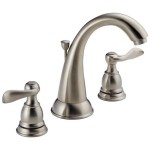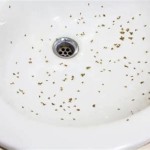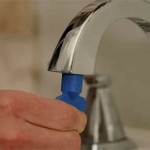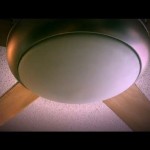How To Take Moisture Out Of Bathroom Walls
Excess moisture in bathroom walls can lead to a variety of problems, including mold growth, peeling paint, and structural damage. Addressing this moisture is crucial for maintaining a healthy and structurally sound home. This article outlines effective methods for removing moisture and preventing its return.
Identify and Address the Source of Moisture
Before attempting to dry out the walls, the source of the moisture must be identified and rectified. Common culprits include leaky pipes, inadequate ventilation, and cracks in the shower or bathtub surround. A thorough inspection of plumbing fixtures, caulking, and grout is essential. Repairing any leaks or cracks is the first step in resolving the moisture problem.
Improve Bathroom Ventilation
Proper ventilation is key to preventing moisture buildup. An effective exhaust fan should be installed and used during and after showers and baths. The fan should vent directly outdoors, not into the attic or another enclosed space. Ensuring adequate airflow helps remove excess humidity and prevents condensation on walls.
Dehumidify the Bathroom
A dehumidifier can significantly reduce moisture levels in the air. Place a dehumidifier in the bathroom and run it according to the manufacturer's instructions. Monitor the humidity levels regularly and adjust the dehumidifier settings as needed. This is particularly effective in climates with high humidity.
Dry Out Affected Areas
Once the source of moisture has been addressed, the affected areas need to be thoroughly dried. Open windows and doors, if weather permits, to increase airflow. Fans can also be used to circulate the air and accelerate the drying process. For severely damp walls, consider using a professional-grade dehumidifier or contacting a water damage restoration specialist.
Apply Mold Remediation Techniques
If mold is present, appropriate remediation measures must be taken. Mold can be hazardous to health, so it's important to handle it safely. Wear protective gear, including gloves and a respirator, when cleaning mold. A solution of bleach and water (typically a 1:10 ratio) can be used to kill mold on non-porous surfaces. For porous materials like drywall, professional mold remediation may be necessary.
Monitor Humidity Levels
After the initial drying process, it's crucial to monitor humidity levels in the bathroom. A hygrometer can be used to measure humidity. Maintaining humidity levels below 50% will help prevent moisture problems from recurring. Regularly check for any signs of returning moisture, such as condensation or musty odors.
Install a Vapor Barrier
In areas prone to high humidity, installing a vapor barrier behind the wall covering can help prevent moisture from penetrating the walls. Vapor barriers are typically made of plastic or foil and are installed during the construction or renovation process. This acts as a protective layer against moisture migration.
Upgrade Bathroom Finishes
Consider using moisture-resistant materials for bathroom finishes. Mold-resistant paint can help prevent mold growth on walls. Choose water-resistant tiles for shower and bathtub surrounds. Properly sealed grout and caulk are essential for preventing water from seeping into walls.
Inspect and Maintain Regularly
Regular inspections and maintenance are key to preventing future moisture problems. Check for leaks in plumbing fixtures and cracks in caulking and grout. Ensure that the exhaust fan is functioning correctly. Regularly clean the bathroom to remove any mold or mildew growth. Proactive maintenance can help prevent costly repairs and health issues associated with excess moisture.
Seek Professional Help When Necessary
If the moisture problem is severe or persistent, it's important to seek professional help. A plumber can identify and repair leaks in pipes. A water damage restoration specialist can assess the extent of the damage and recommend appropriate remediation measures. A qualified contractor can assist with installing vapor barriers and upgrading bathroom finishes.

How To Stop Damp In Bathroom Expert Guide From Timberwise

Stop Bathroom Condensation Once And For All

How To Stop Condensation On Walls In Your Bathroom Igloo Surfaces

Easy Ways To Prevent Water Stains On Bathroom Walls 7 Steps

Stop Bathroom Condensation Once And For All

Bathroom Walls Showing Signs Of Moisture Doityourself Com Community Forums

How To Deal With Bathroom Condensation Big

Water Damage Behind Shower Wall Tips From Professionals And Moisture Expert

Stopping Moisture Condensation Build Up On Bathroom Walls Greenbuildingadvisor

Sticky Humidity On Bathroom Walls Hometalk
Related Posts







